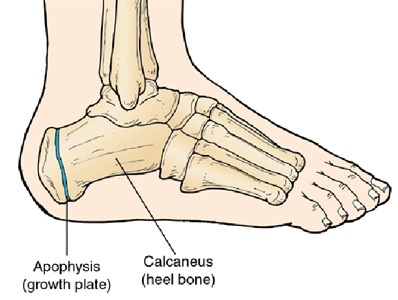Commonly diagnosed, but often mistreated – Severs disease.
Heel pain in active children is incredibly common. The likely cause in 8-14 year old boys more than girls is Sever’s disease. Sounds worse than it is.
In physio speak, it is a traction apophysitis of the calcaneal attachment of the Achilles tendon. In layman’s terms, the Achilles attachment to the heel bone in young children is cartilage. Through the growth phase into puberty, this cartilage attachment is transitioning into a tendon-bone attachment, but through different stages of development can be weaker than others. Those ‘weaker’ stages coincide with growth and poorer mechanics, as well as increasing amounts of sport for children. So the ‘weaker’ attachment is overloaded and becomes inflamed. Eventually, the attachment matures at anything from 12-14 years of age but, in the interim, what can be done to help?
First and foremost, rest is rarely a great fix for active boys and girls. Treat the inflammation with regular ice after activity and find a load (amount of sport) that one can tolerate.
Most importantly, improve the mechanics of the entire leg. The better the mechanics, the less overload. This may include better shoes or boots, heel raises, calf strength, calf extensibility (massage and stretch) and other management strategies.
A good assessment and a management plan is essential.
The message is – Sever’s disease can be improved!
You can have less pain and better function with the right management. Make sure you see a practitioner who is a physiotherapist or podiatrist who is involved in sports.
At Physiosports our management of poor mechanics is second to none. Our podiatrists conduct Footwear Assessments and have Asics and Nike shoes on-site (size 6 upwards), to help you find the best shoe for your children.
If you want to find out more, call Pursue Health on 9131 4977 and book in to see Marcus himself. His adolescent expertise will assess and find the right management for your child’s feet.


